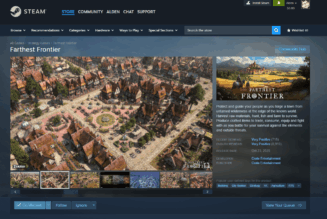
Video site LiveLeak, best known for hosting gruesome footage that mainstream rivals wouldn’t touch, has shut down after fifteen years in operation. In its place is “ItemFix,” a site that bans users from uploading media containing “excessive violence or gory content.”
In a blog post, LiveLeak founder Hayden Hewitt did not give an explicit reason for the site’s closure, saying only that: “The world has changed a lot over these last few years, the Internet alongside it, and we as people.” In a video posted on his YouTube channel Trigger Warning, Hewitt offered no further details, but said that maintaining LiveLeak had become a struggle, and that he and his team “just didn’t have it in us to carry on fighting.”
“Everything’s different now, everything moves on,” says Hewitt, before adding in an aside to the camera: “I don’t fucking like it. I liked it much better when it was the Wild West.”
LiveLeak has been a mainstay of internet culture for many years, its name synonymous with footage of murder, terrorism, and everyday incidents of crime and violence. A sinister doppelgänger to sites like YouTube, LiveLeak was founded in 2006 and grew out of a culture of early internet “shock sites” like Ogrish, Rotten.com, and BestGore: websites that hosted violent and pornographic content with the express aim of disgusting visitors.
LiveLeak, with its tagline of “Redefining the Media,” ostensibly added some nuance to this brutish appeal. Official statements from those involved sometimes defended its content in terms of newsworthiness or truth-telling. When the site attracted controversy in the UK for hosting footage of children fighting, for example, Hewitt defended sharing the videos as a form of bearing witness. “We have to take a stance of saying ‘look all this is happening, this is real life, this is going on, we’re going to show it,’” he told BBC News.
Despite this, the site often changed its policies concerning controversial footage. In 2014 it attracted significant attention (and traffic) for hosting a video of the beheading of US journalist James Foley by terror group ISIS. But soon after the site’s owners announced it would host no future beheading videos created by ISIS.
“We’ve shown the world the true horror of this form of execution more than once in the past and we cannot find any compelling reason to even be thought of as promoting the actions of this group,” said a blog post. “We know they [ISIS] do not find support here on LL and that condemnation is virtually universal but there is no reason at all to show more.”
Similarly, the site chose not to host videos of the 2019 Christchurch shootings, stating in another blog post that LiveLeak never had a “show everything” policy, and that hosting the video would only give the shooter what he wanted: more attention.
Although the site’s content likely stopped it from reaching the prominence of other video hosts, it still attracted sizable numbers of viewers. A 2019 report from The New York Times noted that web tracking firm Alexa ranked it as the 695th most popular website in the world, putting it roughly on a par with mainstream sites like The Onion and Jezebel.
The same report cites an academic study by Sue Tait that attempts to explain the enduring popularity of such violent and gory content. Based on her observations of the Ogrish forums, Tait categorized four different “spectatorial positions.” There is the “amoral gaze,” where the content is stimulating and pleasurable; the “vulnerable gaze” where the imagery is experienced as harmful; the “entitled gaze,” where viewers justify their actions as seeing past the “censorship” of mainstream outlets; and the “responsive gaze,” where looking is framed as a way for the viewer to prepare for coming hardships, like a career in the military.
The range of justifications identified by Tait and other academics suggest that demand for such extreme content will always exist, even if individual sites like LiveLeak come and go.
In his farewell blog post, the site’s founder Hayden Hewitt emphasized the importance of the site’s community. “To the members, the uploaders, the casual visitors, the trolls and the occasionally demented people who have been with us. You have been our constant companions and although we probably didn’t get to communicate too often you’re appreciated more than you realize,” he writes. “On a personal level you have fascinated and amused me with your content. Lastly, to those no longer with us. I still remember you.”










